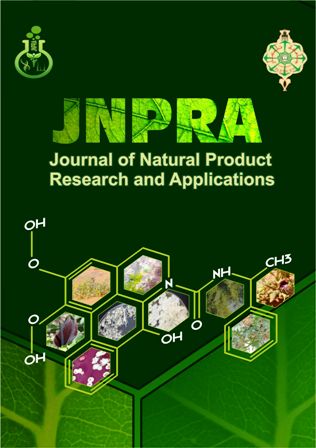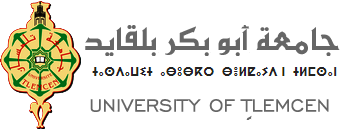Insomnia and therapeutic alternatives: Survey on the use of phytotherapy by the northern Algerian population
DOI:
https://doi.org/10.46325/jnpra.v4i02.76Keywords:
Insomnia; Medicinal plants; Sleep disorders; PhytotherapyAbstract
The number of people suffering from sleep disorders is constantly increasing over the years. To preserve their health and avoid the use of conventional drugs (addiction, undesirable effects, toxicity, etc.), phytotherapy remains a good alternative. This study aims to identify the medicinal plants used by the Algerian population to treat sleep disorders. This was an ethnobotanical survey carried out using an electronic questionnaire concerning the population and their knowledge of the medicinal plants used, followed by bibliographical research on the plants mentioned. 197 people from the north of Algeria took part in this study, which revealed the use of 33 medicinal plants and 7 herbal products to regulate sleep or improve its quality. The use of medicinal plants is widespread in Algeria, prompting researchers to carry out various phytochemical and pharmacological studies to ensure their efficacy and detect any interactions (plants/drugs), adverse effects or toxicity.
References
Adrien, J. (2017, 01.09.2017). Retrieved from https://www.inserm.fr/information-en-sante/dossiersinformation/insomnie#:~:text=L'insomnie%2C%20elle%2C%20toucherait,souffriraient%20d'une%20forme%20s%C3%A9v%C3%A8re.
Allaert, F. (2009). Évaluation d'une phytothérapie dans le traitement des troubles mineurs du sommeil et de l'anxiété légère. La Lettre du psychiatre (Puteaux), 5(3), 66-70.
Bernard, C. (2012). Insomnie Et troubles du sommeil. Retrieved from https://www.altheaprovence.com/insomnie/
Bertrand, L., Schröder, C., Bourgin, P., Maruani, J., Atoui, Y., d’Ortho, M. P., . . . Geoffroy, P. A. (2022). Sleep and circadian rhythm characteristics in individuals from the general population during the French COVID‐19 full lockdown. Journal of sleep research, 31(2), e13480.
Bertrand, M. (2017). La phytothérapie dans le traitement de l’insomnie. Université de Lorraine.
Caro, D. C., Rivera, D. E., Ocampo, Y., Franco, L. A., & Salas, R. D. (2018). Pharmacological evaluation of Mentha spicata L. and plantago major L., medicinal plants used to treat anxiety and insomnia in Colombian Caribbean coast. Evidence-Based Complementary and Alternative Medicine, 2018.
Cassebois, J. (2023). Insomnie liée au COVID-19 : prise en charge à l’officine et alternatives thérapeutiques. Retrieved from https://dumas.ccsd.cnrs.fr/dumas-04188035 Univ-fcomte Dumas Mem-univ-ufc Mem-sante database.
Chang, S.-M., & Chen, C.-H. (2016). Effects of an intervention with drinking chamomile tea on sleep quality and depression in sleep disturbed postnatal women: a randomized controlled trial. Journal of Advanced Nursing, 72(2), 306-315. doi:10.1111/jan.12836
De Sousa, A. (2013). Herbal medicines and anxiety disorders: an overview. Journal of Medicinal Plants, 1(6).
Fattinger, K., & MeierAbt, A. (2003). Interactions entre phytothérapie et médicaments. Paper presented at the Forum Médical Suisse.
Fonteneau, J.-M. (2019). La phytothérapie au service du patient insomniaque. Actualités pharmaceutiques, 58(588, Supplement), 14-16. doi:https://doi.org/10.1016/j.actpha.2019.05.010
Glomot, S. (2017). L'insomnie, ses traitements et les alternatives aux médicaments hypnotiques.
Goetz, P. (2011). Phytothérapie de l’insomnie. Phytothérapie, 9(1), 38-41.
Gony, L., & Petitet, F. (2016). Analyse des différents mélanges de plantes pour les troubles du sommeil commercialisés en France et à l’étranger. Phytothérapie, 14(2), 112-124. doi:10.1007/s10298-016-1029-4
Hennebelle, T., Bailleul, F., & Sahpaz, S. (2007). Plantes sédatives : évaluation pharmacologique et clinique. Médecine du Sommeil, 4(13), 4-14. doi:https://doi.org/10.1016/S1769-4493(07)70029-8
Kumar, V. (2006). Potential medicinal plants for CNS disorders: an overview. Phytotherapy Research: An International Journal Devoted to Pharmacological and Toxicological Evaluation of Natural Product Derivatives, 20(12), 1023-1035.
Létard, J.-C., Canard, J.-M., Costil, V., Dalbiès, P., Grunberg, B., Lapuelle, J., & CREGG, C. n. e. t. c. d. (2015). Phytothérapie–Principes généraux. Hegel, 5(1), 29-35.
Luppi, P.-H. (2017). Sommeil ,Faire la lumière sur notre activité nocturne. Retrieved from https://www.inserm.fr/information-en-sante/dossiers-information/sommeil
Makram, S., Alaoui, K., Benabboyha, T., Faridi, B., Cherrah, Y., & Zellou, A. (2015). Extraction et activité psychotrope de l’huile essentielle de la verveine odorante Lippia citriodora. Phytothérapie, 13(3), 163-167. doi:10.1007/s10298-015-0935-1
Marchand, J. (1993). Utilisation de l’aromathérapie dans le traitement du stress et de l’insomnie. universite de lorraine.
Petitet, F. (2016). Les matricaires, des « camomilles » d’intérêt pour la phyto-aromathérapie. Phytothérapie, 14(3), 196-202. doi:10.1007/s10298-016-1039-2
Rouger, C., & Derbré, S. (2014). Proposer les solutions de phytothérapie adaptées pour combattre les troubles du sommeil. Actualités pharmaceutiques, 53(541), 47-52. doi:https://doi.org/10.1016/j.actpha.2014.10.010
Vigilance, I. N. d. S. e. d. l. (2011). Sommeil: un carnet pour mieux comprendre. Retrieved from https://solidarites-sante.gouv.fr/IMG/pdf/Sommeil_un_carnet_pour_mieux_comprendre.pdf
Downloads
Published
How to Cite
Issue
Section
License

This work is licensed under a Creative Commons Attribution-NonCommercial 4.0 International License.






